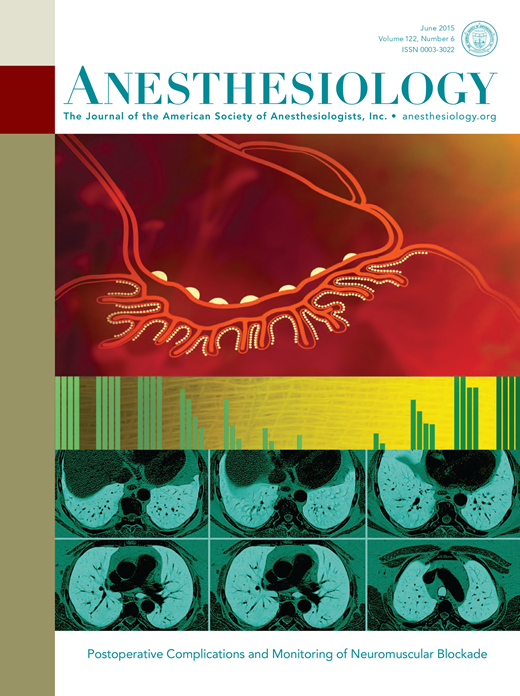使用儿科麻醉学会的儿科危机2.0移动应用程序作为儿科麻醉学研究员的教育评估工具:一项前瞻性、随机、对照的多中心研究。
IF 9.1
1区 医学
Q1 ANESTHESIOLOGY
引用次数: 0
摘要
背景:在快节奏、高度分散注意力的环境中,麻醉师处理危及生命的重大事件,几乎没有时间考虑治疗方案。儿科麻醉学会开发了Pedi Crisis 2.0移动应用程序,以协助管理关键的儿科围手术期事件。我们假设该应用程序可以作为儿科麻醉学研究员培训的正式教育评估工具,并开发了一个一小时的课堂考试,旨在评估应用程序对研究员儿科关键事件管理知识的影响。与单独的基线知识相比,我们试图评估应用程序提供的及时知识是否会导致改进的测试结果。方法儿科麻醉研究员参加了为期1小时的10个儿科关键事件情景(stem)会议。每个场景都有一个关于标准管理的开放式问题。参与者被随机分配使用应用程序(APP)回答一半的问题,另一半不使用应用程序(NO APP)回答。相反,他们利用日常练习、记忆回忆和其他电子资源中的知识。两名盲法审查员对答案进行评分,并计算正确答案的平均百分比。结果来自4个机构的51名儿科麻醉学研究员入组研究。6名受试者被不恰当地随机分配并排除在外。APP条件下,茎1/3/5/7/9和2/4/6/8/10的总正确率显著高于前者(78.7% vs 45.4%, 59% vs 40%, p<0.0001)。每个问题的正确率各不相同;APP组评分均高于无APP组(p < 0.05)。结论:使用Pedi Crisis 2.0应用程序的儿科麻醉学研究员在描述儿科关键事件的管理方面比不使用该应用程序的人员成功得多。因此,我们认为认知辅助,如Pedi危机2.0,应该是儿科麻醉研究员培训课程的一个组成部分。本文章由计算机程序翻译,如有差异,请以英文原文为准。
The Use of the Society for Pediatric Anesthesia's Pedi Crisis 2.0 Mobile Application as an Educational Assessment Tool for Pediatric Anesthesiology Fellows: A Prospective, Randomized, Controlled Multi-Center Study.
BACKGROUND
Anesthesiologists manage life-threatening, critical events in a fast-paced, high-distraction atmosphere, with little time to deliberate about treatment options. The Society for Pediatric Anesthesia developed the Pedi Crisis 2.0 Mobile Application to assist in managing critical pediatric perioperative events. We hypothesized that the application could be used as a formal educational assessment tool in pediatric anesthesiology fellowship training and developed a one-hour classroom examination designed to assess the impact of the application on fellows' knowledge of the management of pediatric critical events. We sought to evaluate whether the just-in-time knowledge provided by the application leads to improved testing outcomes compared with baseline knowledge alone.
METHODS
Pediatric anesthesia fellows participated in a one-hour session with ten pediatric critical event scenarios (stems). Each scenario presented a case with open-ended questions on standard management. Participants were randomized to answer half of the stems using the application (APP) and half of the stems not using the application (NO APP). Instead, they utilized knowledge from routine practice, memory recall, and alternative electronic resources. Two blinded reviewers graded answers, and the average percent of correct answers was calculated.
RESULTS
Fifty-one pediatric anesthesiology fellows from four institutions enrolled in the study. Six fellows were improperly randomized and excluded. The total percent correct scores for stems 1/3/5/7/9 and 2/4/6/8/10 were significantly higher for the APP condition (78.7% vs 45.4%, 59% vs 40%, p<0.0001). The percent correct answers for individual stems varied; the APP condition scores were always statistically higher than the NO APP condition (p < 0.05).
CONCLUSIONS
Pediatric anesthesiology fellows were significantly more successful at describing the management of pediatric critical events when using the Pedi Crisis 2.0 application compared to not using the application. Thus, we believe that cognitive aids, such as Pedi Crisis 2.0, should be an integral component of pediatric anesthesia fellowship training curricula.
求助全文
通过发布文献求助,成功后即可免费获取论文全文。
去求助
来源期刊

Anesthesiology
医学-麻醉学
CiteScore
10.40
自引率
5.70%
发文量
542
审稿时长
3-6 weeks
期刊介绍:
With its establishment in 1940, Anesthesiology has emerged as a prominent leader in the field of anesthesiology, encompassing perioperative, critical care, and pain medicine. As the esteemed journal of the American Society of Anesthesiologists, Anesthesiology operates independently with full editorial freedom. Its distinguished Editorial Board, comprising renowned professionals from across the globe, drives the advancement of the specialty by presenting innovative research through immediate open access to select articles and granting free access to all published articles after a six-month period. Furthermore, Anesthesiology actively promotes groundbreaking studies through an influential press release program. The journal's unwavering commitment lies in the dissemination of exemplary work that enhances clinical practice and revolutionizes the practice of medicine within our discipline.
 求助内容:
求助内容: 应助结果提醒方式:
应助结果提醒方式:


